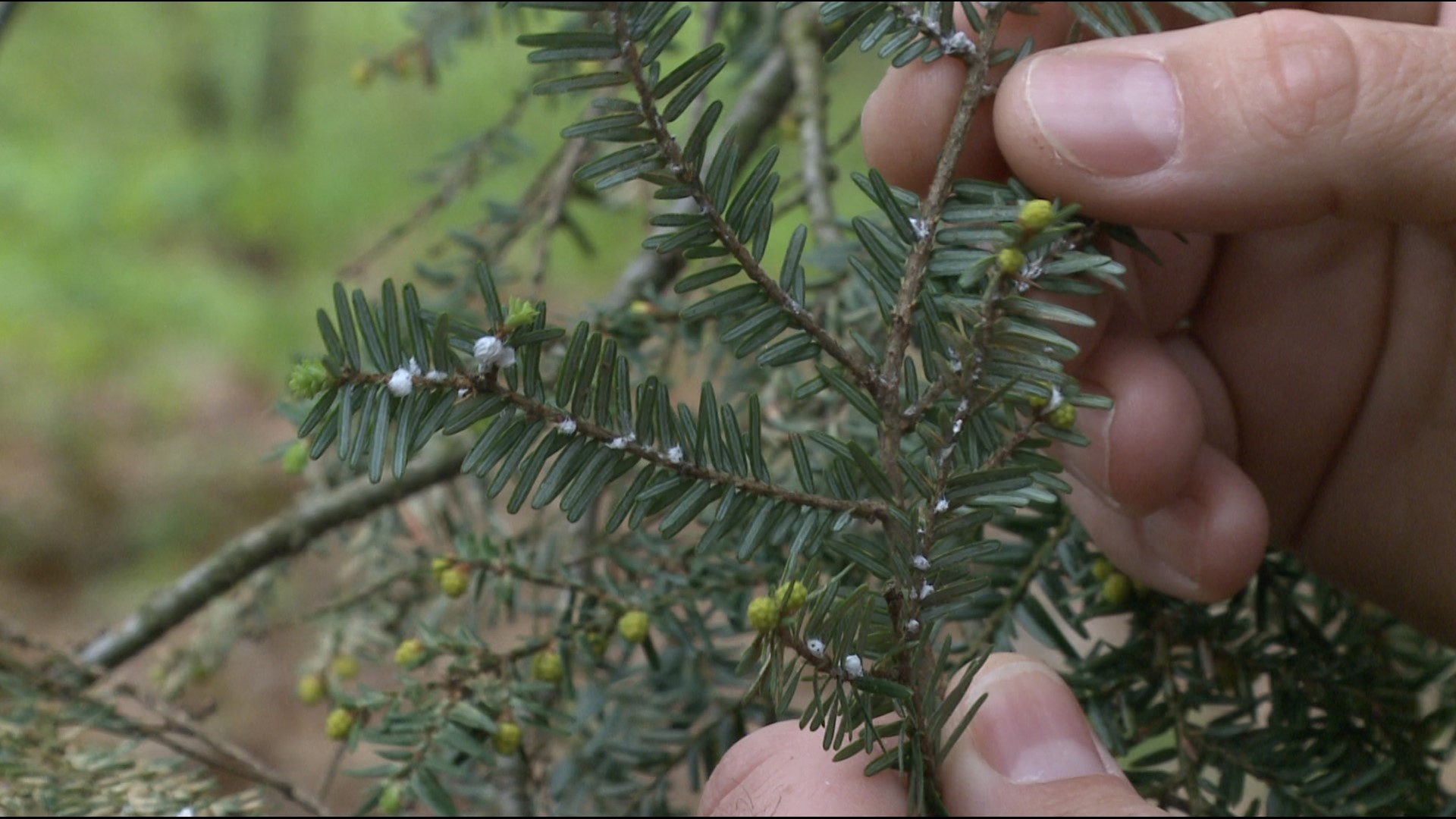MAINE, USA — Gardening with Gutner leaves the garden and heads into the woods to learn about pests that are attacking Maine's trees.
NEWS CENTER Maine Chief Meteorologist Todd Gutner talked with Davey Tree Experts arborist Chris Plante to learn more.
Plante listed four pests that are the biggest concerns:
- Hemlock wooly adelgid
- Winter moth
- Brown tail moth
- emerald ash borer
Hemlock wooly adelgid
Plante explained that the hemlock wooly adelgid insect has been in Maine for nearly a decade. They appear as white spots under the branch on the nodes of the needles. An oil treatment in the spring and fall helps with management.
Winter moth
The winter moth hatches in the ground and climbs up the tree to eat the vegetation. Treatment is a sticky business. Plante showed Gutner how to wrap a tree with plastic wrap several times around the trunk about 3 feet off the ground. Then apply Tree Tanglefoot insect barrier, a sticky and gummy material, on top of the plastic. When the pests climb up the tree, they become stuck in the goo. When asked how bad is the winter moth in Maine, Plante said, "it's been bad in the past, but we've had really good success rate in preventing their damage with this."
Emerald ash borer
Plante voiced his worry over the emerald ash borer. "It's a big concern of ours," Plante said. "It just made its way into Maine and once it gets its way into an ash tree, it will kill it." He explained the treatment is a systemic injection that lasts for two years.
Brown tail moth
This pest affects the health of trees and humans. They not only kill the vegetation but also cause skin irritation and breathing issues for unlucky people exposed to the hairs of the caterpillar. Plante said the brown tail moth has been prevalent in southern Maine but seems to be moving up the coast and up the rivers. You can see the nests in trees during winter, which is a good time to clip them from the trees and drown them in a bucket of water. If you can't clip them, you would need to use a hydraulic spray or injection, Plante explained.

